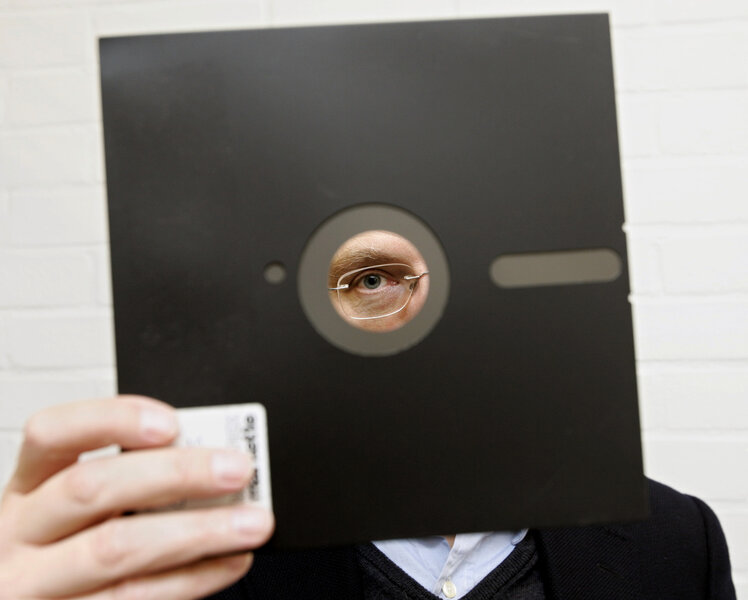What will it take to bring US government 21st century tech?
The United States government runs crucial systems – like the nuclear system – on floppy disks, according to a new report.
Given that the federal government spends $80 billion annually on maintaining information technology (IT) systems, the US Government Accountability Office (GAO) took a closer look at the systems these funds maintain. GAO found that 75 percent of these funds are designated for maintaining antiquated technology.
"Federal legacy IT investments are becoming increasingly obsolete: many use outdated software languages and hardware parts that are unsupported," GAO writes in a May 2016 report to Congress, published Wednesday. "Agencies reported using several systems that have components that are, in some cases, at least 50 years old. For example, Department of Defense uses 8-inch floppy disks in a legacy system that coordinates the operational functions of the nation's nuclear forces."
Created by IBM in 1967, floppy disks were used in the early computing age as a cheap alternative to expensive hard drives. "Floppies" used to be the only way to add new programs onto a computer or back-up important information. But these functions are now occupied by USB drives, and the latest computer systems no longer support floppies.
"Replacement parts for the [Defense] system are difficult to find," adds the report, "because they are now obsolete."
The first prototype was eight inches in diameter, but more advanced versions came out in 1976 and 1984, which measured 5.25 and 3.5 inches, respectively. And the US government continues to use the oldest version of an already obsolete technology.
"The system coordinates the operational functions of the United States' nuclear forces, such as intercontinental ballistic missiles, nuclear bombers, and tanker support aircrafts, among others," explains the GAO report. "For those in the nuclear command area, the system's primary function is to send and receive emergency action messages to nuclear forces."
Although President Obama created the position of Chief Technology Officer in 2009 and started the United States Digital Service last year, there is not a steady revenue stream dedicated to keeping the federal government technologically up-to-date. Megan Smith, appointed last year as the first female CTO, and bringing technical expertise from her time at the Massachusetts Institute of Technology, Google, and Apple, is trying to upgrade "a federal bureaucracy ruled by creaky technology and run in part on the floppy disk," writes the New York Times.
"The real struggle for Megan Smith is that while this role does have a direct line to the presidency, it does not have much of a budget or any authority over other agencies," Clay Johnson, co-founder of Blue State Digital, the company that ran Mr. Obama’s online campaign in 2008, told the New York Times.
Defense initiated a $60 million overhaul of its command system in March 2016, with an expected complete date of 2020. And the floppy disks are to be replaced with "secure digital cards" before then, potentially by the end of 2017.
But the GAO says "more specific goals and timetables are needed" to ensure that federal IT investments are updated in a timely manner.
"This is not a partisan issue," Congressman Jason Chaffetz from Utah (R), chairman of the House Committee on Oversight and Government Reform, told the Associated Press. "We all need to come together on this, on both sides of the aisle. It is a vital part of the infrastructure we need in order to have a fully functional government."
This report contains material from the Associated Press.







